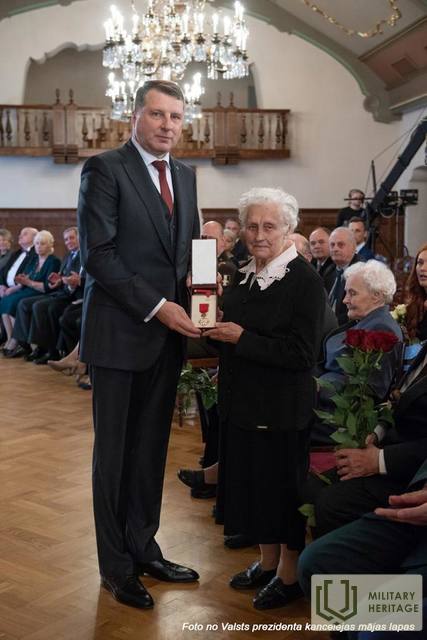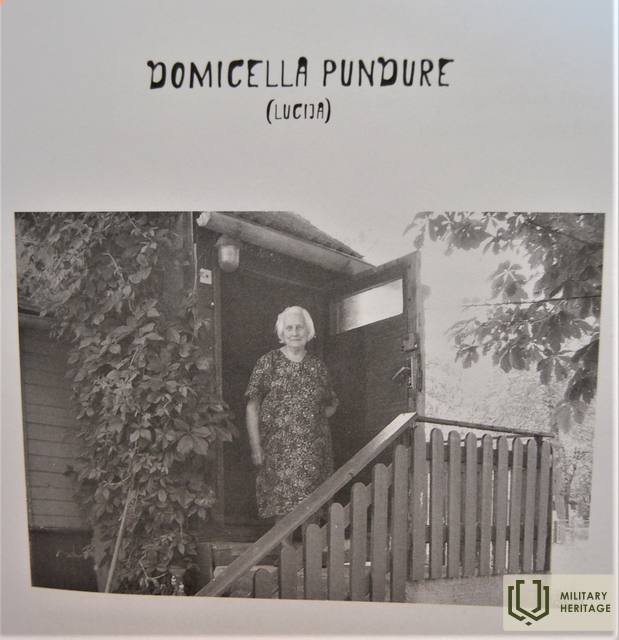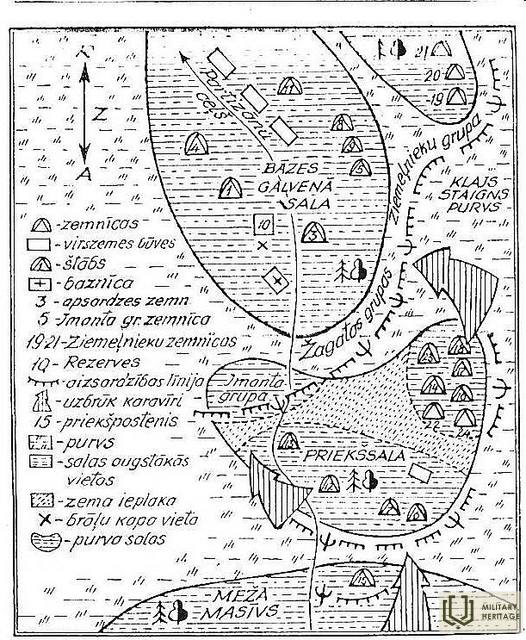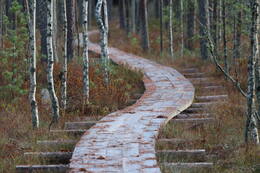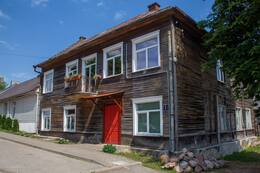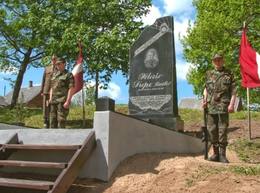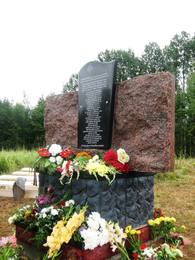Metsatütar Domicella Pundure (Lucia)
Domicella Pundure on 90. Riia lossis sai ta 3. mail 2018 president Raimonds Vejonise käest Viestursi ordeni eriliste teenete eest riiklikus vastupanuliikumises ja riigi iseseisvuse kaitsmisel. Domicella Pundure jääb Stompaku raba lahingu viimaseks tunnistajaks.
Domicella Pundure on rahvuslik partisan, kes veetis veebruaris 1945 üle kuu aja Stompaku raba asulas, kus sel ajal elas umbes 360 partisanit, sealhulgas naisi, lapsi ja vanureid. Ta abiellus 1948. aastal, kuid juba 1949. aastal saadeti kogu pere Siberisse Omski oblastisse. Ta naasis Lätti aprillis 1960. Noor pere ostis maja tolleaegsesse kolhoosi "Borec", töötas maabrigaadi kolhoosis. Kui tema abikaasa suri, kolis Domicella Pundure 1987. aasta sügisel Balvile. Juba pensionil olles töötas ta veel paar aastat hotelli puhvetis.
Domicella Pundure elulugu saab lugeda Sanita Reinsoni raamatust "Metsa tütred".
Sündis 1. detsembril 1927 Šķilbēni kihelkonna Kručinova kodus. Pärast nelja klassi lõpetamist lähedal asuvas Augstasila algkoolis asus Domicella tööle isatalus.
„Minu isa oli Läti iseseisvuse ajal valvur, kuid Saksa ajal töötas ta Šķilbēni politseis. Kui 1944. aasta juulis-augustis sõjateed teist korda ületas, polnud meid kodus. Naabrid olid kohalikud venelased ja nad veensid neid lahkuma. Lahkusime, aga nad ei läinud liiga kaugele, jäid sugulaste juurde siia isegi Balvile. Nii et mõne aja pärast sõitsime tagasi.
Aga isa lõpetas autojuhtimise ega elanud enam kodus. Esialgu ta kohale ei ilmunud, aga siis kohtusime temaga. Ta ei ilmunud enam Šililbenisse. Nad elasid nii väikeses rühmas, alles hiljem sisenesid suuremasse rühma. Siis läks isa Stompaku sohu. Hiljem, kui metsavendade arvukus suurenes, hakkasid tšekistid kõiki terroriseerima ja kui mulle saadeti kutse turbarabasse tööle minna, võttis isa mind 1945. aasta veebruaris enda juurde. Võttis hobuse Stompaki. Metsast lahkusin, seljas ja kõik. Roosipärg, jah, see oli minuga - see pidi juba minuga olema. Ja me läksime palvetama ja Jumal kaitses meid. Kes pidi kukkuma, on juba kukkunud.
Stompaku mets ei olnud paks ja laager ei asunud teest nii kaugel. Me ei sõitnud suurel teel, seal saime otse läbi metsade sõita. Talvel, kui metsatööd käisid, olid teed juba liinidega sisestatud. Kõik laagris olijad said nime. Mu isal oli Irbitis, aga mul oli ilmselt Lucia. Kuni lahingud laagris algasid, tegime laagris seda, mida olime juba tellinud. Igas punkris oli üks vanem ja siis see käskis. Elan koos isaga punkris. Talvel polnud külm. Meil oli väike pliit, kus me sööma läksime. Seinad on valmistatud palkidest. Kõrgus on selline, et saate jalule tõusta, ja näkid, kus keegi oli üleval, kes oli allosas. Teised punkrid olid suuremad, teised väiksemad. Oli kohti, kus oli rohkem inimesi, kus oli vähe inimesi. Seal olid ka hobused. Meie enda punkris oli kolm hobust. Nende jaoks on sellised onnid valmistatud kuuseoksadest. Nad langesid ka lahingus.
Üldiselt oli neis Stompakos päris palju naisi. Lapsi oli ka. Väikelastele. … Seal oli isegi spetsiaalne punker, kus leiba küpsetati. Aga üldiselt hoolitses iga punker ise oma toidu eest - kust igaüks seda sai, läks sugulaste juurde või pere juurde, kellel oli kodu. Toit nagu maalt. Nagu talvelgi, tapeti sigu, liha, kodujuust oli, piim. Nälga polnud ... Mulle öeldi, et Stompakose punkrid on nummerdatud või et need numbrid on nüüd paigas. Meie oma oli kuues punker.
Me ei käinud laagris punkrites ringi ega näinud teisi. Teistega kohtusime leerikirikus ja siin -seal. Kirik asus laagris endas. Minu jaoks olid tegemisel osalenud mu abikaasa ja tema vend. See oli nii väike punker, üle kahekümne inimese ei saanud sisse. Kirikusse tulid katoliiklased. Jumalateenistused toimusid igal hommikul. Ja seal võeti isegi ülestunnistused vastu. Preester oli pärit Šķilbēni - Ludwig Stagarsist.
Umbes päeval, mil toimus lahing 2.-3. märtsis. Tulistamine algas hommikul. Ma ei teadnud, mis toimub. Inimesed jooksid laagris ringi. Olime isa õega kirikus. Ja me käisime seal terve päeva. Hiljem hakati haavatuid meile tooma. Neid oli palju. Meil oli Romāns, Vilaka sanitar. See käskis meid. Aitasime nii palju kui suutsime - sidusime haavatuid, andsime vajalikku ja tegime kõike muud. Seal kohtusin oma tulevase abikaasaga. Ta sai jalast vigastada. Ja sealt edasi algas kõik meie jaoks.
Üldiselt oli selles suures laagris turvaline, kuid lahingupäev oli hirmutav. Õudus, milline lärm oli! Olime ühes hirmus. Pärast lahingut rääkisid nad igakülgselt, kuid siiski, näeme, sai meie oma pihta. Meestel oli igasuguseid relvi, neid polnud vähe. Laagris oli põhiline Peter Supe, aga ma ei näinud teda. Ja siis õhtul, siis läksime välja. Vigastatud viidi hobusega. Läksime välja need, kes olid täiesti, nagu öeldakse, terved, kõik tugevad, välja. Ma ei mäletanud, kui palju meid oli, aga neid polnud palju. Sillad läbi metsa, läbi soo, läbi metsa. Mehed muidugi käed püsti. Läksime ööseks. Järgmisel õhtul tulime välja kodus endise Bareca juurde otse metsaserval. Andis meile teed. Ja küllap sai natuke leiba ka antud, sest me läksime täiesti seistes välja, kõik, mis punkris oli, jäi sinna.
Ja siis meie grupp lahutas. Läksime isaga koju. Kuid ta ei elanud kodus. Ja nii ei puudutanud mind enam keegi, ma ei läinud kuhugi kandideerima ega registreeruma, elan majas. Tuleb välja, et elasin kuu aega metsas. ”
2. märtsil 1945, kui laagris oli umbes 300 inimest, ründas soot Nõukogude vägede üksus. Peaaegu ööpäevaringselt pidasid metsavennad vastu umbes 500 -liikmelisele suurele vaenlase väele. Lahingus hukkus ja sai haavata 28 partisanit ja 46 Nõukogude sõdurit. Kohalike hirmutamiseks tapetud metsavendade jäänused visati Vilakale ja mõnedesse lähedalasuvatesse küladesse.
http://www.balvurcb.lv/kb/?View=entry&EntryID=1078
Tsitaadid Sanita Reinsoni raamatust "Metsa tütred"
Seotud ajajoon
Seotud teemad
Seotud objektid
Matkarada ning metsavendade laagri- ja mälestuspaik Stompaki soos
Stompaki soomassiiv on Balvi ja Viļaka linnade vahel asuv NATURA 2000 looduskaitseala. Soo idaosas on tähistatud 1,5 kilomeetri pikkune rada, mis viib läbi metsa ja mööda rabasse rajatud laudteid viiele soosaarele, kuhu metsavennad olid ehitanud oma punkrid. Raja äärde on paigaldatud infostendid, mis tutvustavad kohalikke loodusväärtusi ja ajaloosündmusi. Raja ääres asub puhkeala. Rada aitavad leida maanteele P35 püstitatud viidad. 1945. aasta märtsi alguses asus Stompaki laagris üks suurimaid metsavendade asumeid Baltikumis. Siin elas u 350–360 inimest, sealhulgas 40–50 naist. Alates 1945. aasta jaanuarist korraldasid metsavennad regulaarseid rünnakuid okupatsioonirežiimi sõjaväelaste ja nende toetajate vastu. Laagris asus pagarikoda, punker-kirik ja 25 elamiseks mõeldud punkrit, mis olid ehitatud pooleldi maa sisse ja kus võis elada 8–30 inimest. Punkrikohad on näha veel tänapäevalgi. 2.–3. märtsil 1945 toimus siin Stompaki lahing, mis oli suurim Läti metsavendasde lahing. Nende vastu võitlesid 483 sõdurit NKVD 5. laskurdiviisi 143. laskurpolgu 2. ja 3. laskurpataljoni allüksustest, püstolkuulipildujatega relvastatud laskurrühmast, miinipildujaroodust, luure- ja sapöörirühmadest ning hävituspataljonist.
Näitus „Abrene ruumid”
Näitus „Abrene ruumid” on üles pandud Viļaka kesklinna lähedale. See hõlmab ajavahemikku 1920–1960, kui Viļaka kuulus Abrene piirkonna Jaunlatgale haldusüksusesse ja oli Viļaka piirkonna ja Abrene rajooni keskus. Näitus asub Viļaka kõige huvitavama ja mitmekülgsema ajalooga hoones.
Algselt asus see māja kunagisel Marienhauseni turuväljakul, hiljem asusid siin korterid, bürood ja mitmesugused kauplused; Teise maailmasõja ajal tegutsesid siin Läti Omakaitse staap, Gestapo ja KGB. Näitusel eksponeeritakse esemeid, mis on pärit metsavendade laagrist Stompaki soos ning mis on seotud metsavendlusega Latgales, samuti on välja pandud Vabadussõjaga seotud dokumente ja fotosid. Kui tellida giidiekskursioon, tutvustab väljapanekut omanik Dzintars Dvinskis.
Monument Kirde rahvuspartisanide komandörile Pēteris Supile - "Cinītis"
Austades rahvuspartisanide komandöri Pēteras Supese mälestust, avati 28. mail 2005 Vilakas talle pühendatud monument. See on paigutatud Viļaka katoliku kiriku lähedale, sõja ajal kaevatud kaevikute servale, kuhu tšekistid matsid mahalastud rahvuspartisanid. P.Supemile pühendatud monumendi alla on paigutatud kapsel 386 langenud rahvuspartisani nimede, lahingukirjelduste ja materjalidega partisaniülema kohta. Kivi raiutud sõnad: "Sinule, Läti, jäin truuks viimse hingetõmbeni".
Monumendi autor on Pēteris Kravalis.
Selle kõrval on mälestuspaik Stompaki metsas ja teised lahingupaigad aastatel 1944-1956 langenud ja tšekistide poolt mõrvatud Läti vabadusvõitlejatele.
20. juunil 2008 avastati paremast seinast graniitplaat, millel olid kolme sambasse paigutatud 55 langenud partisani nimed.
Monument püstitati ülejäänud elanikkonna hirmutamiseks kohta, kus kommunistlikud okupatsioonivõimud kunagi mõrvatud partisanide säilmeid välja panid.
Kõrvalolevale autahvlile on graveeritud tänusõnad Pēteris Supele ja Bronislava Martuževa luuletus:
"Tõuse üles, Peter Supe,
Hing, lahingus!
Täna sinu vereohver,
Tõusnud rahvas.
Mine välja elama igavesti
Noorte jõus ja elujõus,
Mähib, lehvib, voldib
Tõusvas lipus!"
Monument vastupanuliikumise liikmetele Stompakises
Asub Balvist 15 km kaugusel Viļakase suunas, paremal pool teed.
Näha on mälestusmärk.
Avati 2. ja 3. märtsil 1945 lahingutes langenud Pēteras Supese rahvuspartisanide mälestusmärk vastupanuliikumise liikmete mälestussammas Balva - Viļaka maantee ääres Stompaki soo vastas. 11. augustil 2011, Läti vabadussõjalaste mälestuspäeval. Juuli lõpus põimiti monumendi alusesse kapsel sõnumiga tulevastele põlvedele. Kapslisse on pandud dokument 28 rahvuspartisani nimedega, kes langesid 1945. aasta 2. ja 3. märtsi lahingutes.
"Veebruaris 1945 rajati Balvu-Viļaka maanteest 2 km kaugusel asuvale Stompaku soo saartele, mida rahvas hakkas kutsuma Stompaku soo saarteks, Läti suurim rahvuspartisanide laager, kus 22. aastal elas 360 inimest. kaikaid.Nende hulgas mõned leegionärid, kes leegioni diviisi taandumiseks olid kõigi relvadega isamajja jäänud.Partisanide hävitamiseks ründasid 2. märtsil 1945 Tšehhi vägede kahe pataljoni sõdurid kaikaid koos hävitajatega, mille relvastuses oli ka neli miinipildujat Lahingud kestsid kogu päeva, partisanid osutasid visa vastupanu ning ründajad kandsid suuri kaotusi, mistõttu ei õnnestunud laagrit vallutada ja partisane hävitada 28 elanikku ka Stompaku raba oli langenud või hukkunud pärast lahingus raskelt vigastada saanud. Järgmisel ööl murdsid partisanid lahinguga laagri piiramise ja jäid võitmatuks" – nii räägib auhinnaosakonna rahvusliku vastupanuliikumise liige. kirjutab Stompaku lahingu juhtumikomisjoni esimehest Zigfrīds Berķisest.





